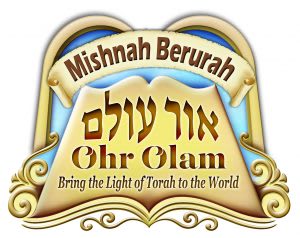The Differences Between Lighting for Shabbos and for Yom Tov

Question: Are there any differences between the mitzvah of lighting candles for Shabbos and the mitzvah of lighting them on Yom Tov?
Discussion: There is one major difference which has many ramifications: On Shabbos itself, it is obviously prohibited to light candles, but on Yom Tov it is permitted to do so. Since it is permitted to light a fire in order to cook, it is likewise permitted to light a fire for other reasons, unrelated to cooking (based on the principle of “mitoch”). Therefore, although lighting Shabbos candles before Shabbos is absolutely required, lighting Yom Tov candles before Yom Tov is not absolutely required. In fact, if Yom Tov follows immediately after Shabbos, the candles must be lit on Yom Tov, since they cannot be lit on Shabbos. Similarly, candles may not be lit on the first day of Yom Tov for the second night, so they must be lit on the second night itself.61
Lighting candles for the first day of Yom Tov, when it is the middle of the week, is a matter of debate. In the preface to the work Perishah and Derishah on Yoreh Deah62 it is mentioned that women had a common practice to light Yom Tov candles after their husbands returned from shul. The wife of the author of Perishah believed this practice to be in error and that, instead, a woman should light Yom Tov candles before the onset of Yom Tov. She offered two reasons for this: First, to properly honor the Yom Tov, the lights should be lit before Yom Tov begins. Second, melachah which could have been done before Yom Tov should not be done on Yom Tov.63 (See below for an additional reason to light before Yom Tov, which applies especially to contemporary times.) Nevertheless, other Acharonim64 defend the original custom, and many women still have the custom to wait until their husbands come home before they light.
Note that although one may light candles on Yom Tov, one may only transfer from a pre-existing flame but not create a new flame by striking a match. If one does not have a flame, he may take one from a neighbor only if the candle will not be transported outdoors where it is vulnerable to the wind.65
Additionally, one may not extinguish the match. Instead, it should be put down and allowed to go out by itself.
61 See foreword to Perishah cited below, as well as Toras Chaim (R’ Ya’akov Chaim Sofer) 263:20, who make this point. Note that Tosafos (Beitzah 22a, ד"ה אין) writes that common practice in his day was, indeed, to light on the first day of Yom Tov for the second. Indeed, Eliyah Rabbah (488:7) rules that it is preferable to light on the first day of Yom Tov for the second day, and cites Shelah who rules accordingly. Yisrael Vehazmanim (I, page 564) and others note that, especially today, it is preferable to light at night, as artificial lights make Tosafos’s rationale seemingly irrelevant. See there for a lengthy discussion of the issue; and see Yom Tov Kehilchaso 26:8.
62 The Perishah and Derishah is a twin commentary on all four sections of the Tur. Its author, R’ Yehoshua Falk Katz (1555-1614), also wrote the Sema commentary on Shulchan Aruch Choshen Mishpat.
63 This is the ruling of Pri Megadim (Mishbetzos Zahav) 260:3 as well. See also Pri Yitzchak I:6.
64 Toras Chaim ad loc. See also Yom Tov Kehilchaso 26, footnote 15, who finds a precedent in the Rishonim for this practice.
65 See Beiur Halachah 514:3.
